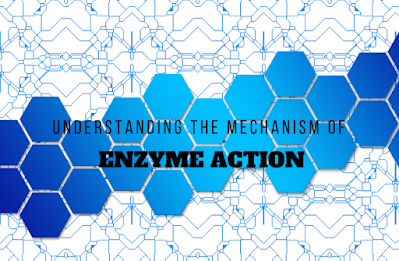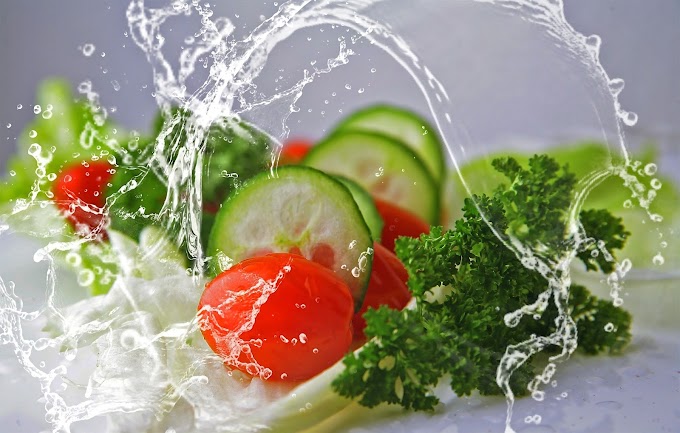Understanding the Mechanism of Enzyme Action
Enzymes are crucial biomolecules that play a vital role in facilitating and regulating various biochemical reactions within living organisms. These catalysts are essential for life, as they speed up chemical reactions that would otherwise occur too slowly to support the necessary life processes. This article will delve into the intricate world of enzymes and explore the mechanism of enzyme action in detail.
Table of Contents
- What Are Enzymes?
- The Importance of Enzymes
- Enzyme Structure
- Lock and Key Model
- Induced Fit Model
- Mechanism of Enzyme Action
- Factors Affecting Enzyme Activity
- Role of Enzymes in Everyday Life
- Conclusion
1. What Are Enzymes?
Enzymes are biologically active proteins that act as
catalysts to speed up chemical reactions. They are found in all living
organisms, from the tiniest bacteria to the most complex mammals. Enzymes are
highly specific, which means they catalyze a particular chemical reaction or a
group of closely related reactions.
2. The Importance of Enzymes
Enzymes are vital for life because they regulate and facilitate essential metabolic processes. Without enzymes, many biochemical reactions would occur too slowly to sustain life. These reactions include energy production, digestion, cell division, and the synthesis of various molecules, such as DNA and proteins.
3. Enzyme Structure
Enzymes are typically globular proteins, and their three-dimensional structure is crucial to their function. This structure is determined by the sequence of amino acids in the enzyme's polypeptide chain. Enzymes often consist of one or more polypeptide chains that fold into a specific shape, which is essential for their catalytic activity.
4. Lock and Key Model
The lock and key model is one of the early models used to explain enzyme-substrate interaction. According to this model, the enzyme's active site is a rigid, pre-formed pocket that perfectly complements the substrate's shape. The substrate fits into the active site like a key fits into a lock. This model implies that the active site is static and unchanging.
5. Induced Fit Model
The induced fit model provides a more accurate representation of how enzymes and substrates interact. In this model, the active site is not a rigid pocket but rather a flexible structure. When the substrate binds to the enzyme's active site, the enzyme undergoes conformational changes to accommodate the substrate. This induced fit ensures a more precise and efficient interaction, increasing the enzyme's catalytic efficiency.
6. Mechanism of Enzyme Action
The mechanism of enzyme action can be broken down into a few key steps:
- Substrate Binding: The substrate, the molecule upon which the enzyme acts, binds to the enzyme's active site through non-covalent interactions, such as hydrogen bonds and van der Waals forces.
- Formation of the Enzyme-Substrate Complex: The enzyme and substrate form a temporary complex. This complex lowers the activation energy required for the chemical reaction to occur.
- Catalysis: The enzyme facilitates the chemical reaction by stabilizing the transition state of the reaction, making it easier for the reaction to proceed. Enzymes do not alter the equilibrium of the reaction but accelerate the rate at which equilibrium is reached.
- Product Formation: After catalysis, the products are released from the enzyme's active site, leaving the enzyme unchanged and available to catalyze more reactions.
7. Factors Influencing Enzyme Activity
Various factors influence enzyme activity:
- Temperature: Enzymes have an optimal temperature at which they function most efficiently. Extreme temperatures can denature the enzyme, rendering it inactive.
- pH: Enzymes also have an optimal pH at which they work best. Changes in pH can disrupt the enzyme's structure and, consequently, its function.
- Substrate Concentration: The rate of enzyme activity increases with increasing substrate concentration until all available enzyme active sites are saturated.
- Enzyme Concentration: The more enzyme molecules present, the higher the rate of catalysis, assuming ample substrate is available.
- Inhibitors: Enzyme activity can be inhibited by specific molecules known as inhibitors, which can be competitive or non-competitive in nature.
8. Enzymes in Everyday Life
Enzymes are not limited to the realm of biology and biochemistry. They find applications in various industries and everyday products. Here are a few examples:
- Food Industry: Enzymes are used to speed up processes like fermentation, cheese production, and the clarification of fruit juices.
- Detergents: Protease enzymes in detergents help break down protein-based stains, such as grass and blood.
- Medicine: Enzymes play a critical role in various diagnostic tests and therapeutic treatments.
- Biotechnology: Enzymes are used in the production of biofuels, pharmaceuticals, and genetic engineering techniques like PCR.
9. Conclusion
Enzymes are the unsung heroes of the biological world,
quietly accelerating the chemical reactions that sustain life. Their intricate
mechanisms of action, often described by the induced fit model, showcase the
beauty of nature's design. Understanding the mechanisms of enzyme action is not
only a fundamental aspect of biology but also the key to unlocking their vast
potential in various scientific and industrial applications. From digesting our
food to powering biotechnological advancements, enzymes are indeed a remarkable
gift to humanity.








If you have any doubt, let me know.